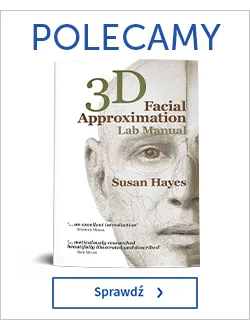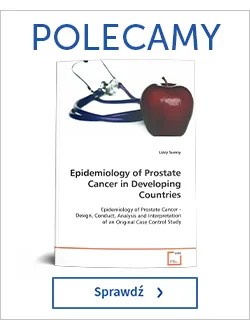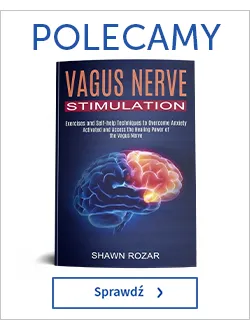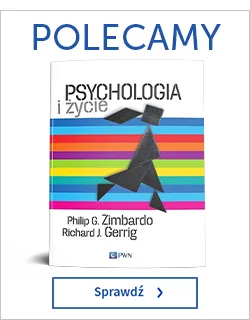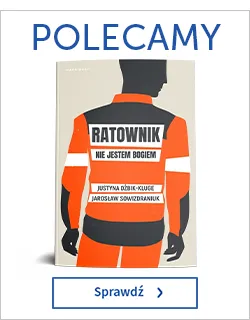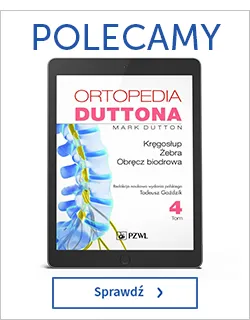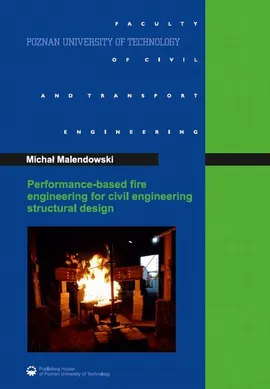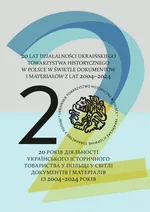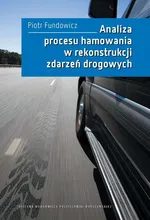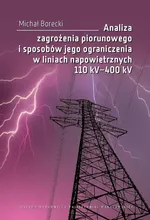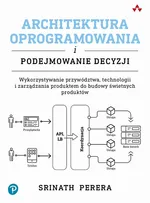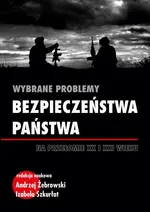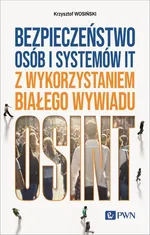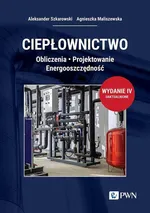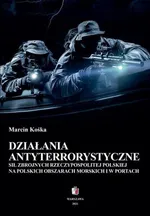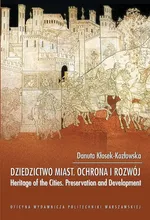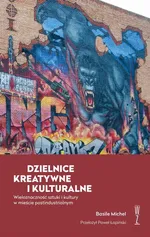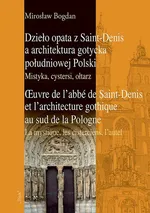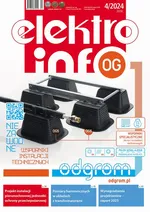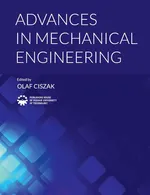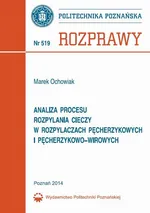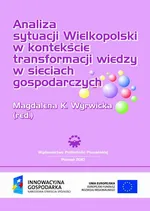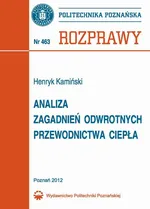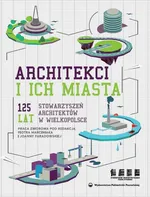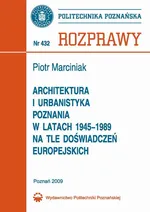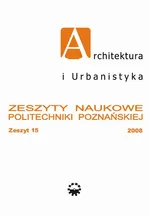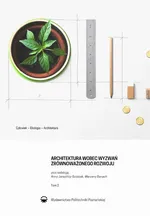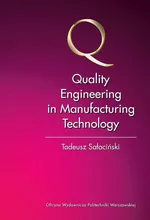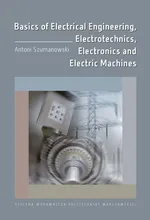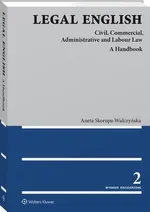- Kategorie:
- Język wydania: angielski
- ISBN: 978-83-7775-603-4
- ISBN druku: 978-83-7775-603-4
- Liczba stron: 302
-
Sposób dostarczenia produktu elektronicznegoProdukty elektroniczne takie jak Ebooki czy Audiobooki są udostępniane online po uprzednim opłaceniu (PayU, BLIK) na stronie Twoje konto > Biblioteka.Pliki można pobrać zazwyczaj w ciągu kilku-kilkunastu minut po uzyskaniu poprawnej autoryzacji płatności, choć w przypadku niektórych publikacji elektronicznych czas oczekiwania może być nieco dłuższy.Sprzedaż terytorialna towarów elektronicznych jest regulowana wyłącznie ograniczeniami terytorialnymi licencji konkretnych produktów.
-
Ważne informacje techniczne
-
Minimalne wymagania sprzętowe:
- procesor: architektura x86 1GHz lub odpowiedniki w pozostałych architekturach
- Pamięć operacyjna: 512MB
- Monitor i karta graficzna: zgodny ze standardem XGA, minimalna rozdzielczość 1024x768 16bit
- Dysk twardy: dowolny obsługujący system operacyjny z minimalnie 100MB wolnego miejsca
- Mysz lub inny manipulator + klawiatura
- Karta sieciowa/modem: umożliwiająca dostęp do sieci Internet z prędkością 512kb/s
-
Minimalne wymagania oprogramowania:
- System Operacyjny: System MS Windows 95 i wyżej, Linux z X.ORG, MacOS 9 lub wyżej, najnowsze systemy mobilne: Android, iPhone, SymbianOS, Windows Mobile
- Przeglądarka internetowa: Internet Explorer 7 lub wyżej, Opera 9 i wyżej, FireFox 2 i wyżej, Chrome 1.0 i wyżej, Safari 5
- Przeglądarka z obsługą ciasteczek i włączoną obsługą JavaScript
- Zalecany plugin Flash Player w wersji 10.0 lub wyżej.
-
Informacja o formatach plików:
- PDF - format polecany do czytania na laptopach oraz komputerach stacjonarnych.
- EPUB - format pliku, który umożliwia czytanie książek elektronicznych na urządzeniach z mniejszymi ekranami (np. e-czytnik lub smartfon), dając możliwość dopasowania tekstu do wielkości urządzenia i preferencji użytkownika.
- MOBI - format zapisu firmy Mobipocket, który można pobrać na dowolne urządzenie elektroniczne (np.e-czytnik Kindle) z zainstalowanym programem (np. MobiPocket Reader) pozwalającym czytać pliki MOBI.
- Audiobooki w formacie MP3 - format pliku, przeznaczony do odsłuchu nagrań audio.
-
Rodzaje zabezpieczeń plików:
- Watermark - (znak wodny) to zaszyfrowana informacja o użytkowniku, który zakupił produkt. Dzięki temu łatwo jest zidentyfikować użytkownika, który rozpowszechnił produkt w sposób niezgodny z prawem.
- Brak zabezpieczenia - część oferowanych w naszym sklepie plików nie posiada zabezpieczeń. Zazwyczaj tego typu pliki można pobierać ograniczoną ilość razy, określaną przez dostawcę publikacji elektronicznych. W przypadku zbyt dużej ilości pobrań plików na stronie WWW pojawia się stosowny komunikat.
Performance-based fire engineering for civil engineeering structural desigin
(eBook)-
Druk: 2020
-
Wydanie/Copyright: wyd. 1
-
Autor: Michał Malendowski
-
Wydawca: Wydawnictwo Politechniki Poznańskiej
-
Formaty:
PDF (Watermark)WatermarkZnak wodny czyli Watermark to zaszyfrowana informacja o użytkowniku, który zakupił produkt. Dzięki temu łatwo jest zidentyfikować użytkownika, który rozpowszechnił produkt w sposób niezgodny z prawem. Ten rodzaj zabezpieczenia jest zdecydowanie najbardziej przyjazny dla użytkownika, ponieważ aby otworzyć książkę zabezpieczoną Watermarkiem nie jest potrzebne konto Adobe ID oraz autoryzacja urządzenia.
Performance-based fire engineering for civil engineeering structural desigin
The author expresses his thanks to dr hab. inż. Adam Glema, prof. of Poznan University of Technology, for his supervision, advice and huge support. Many thanks are also directed to dr inż. Janusz Dębiński, for his general advice and comments that he shared with me during this research. From October 2011 to September 2015, financial support was provided from Ruukki Construction OY within scientific grant 11-962/2011-14. From October 2016 to September 2017, the research was financially supported by the National Science Centre of Poland under the Etiuda-4 project. The experimental work was sponsored entirely by the Building Research Institute of Poland, with the support of dr inż. Paweł Sulik and dr inż. Wojciech Węgrzyński. This support is gratefully acknowledged.
CONTENTS List of Figures iv List of Tables x Notation xi Acknowledgment xvi 1. Introduction 1 1.1. State-of-the-art 1 1.1.1. Performance-based fire engineering 1 1.1.2. Advancements in the solving of structural fire engineering problems 9 1.2. Research objectives and the concept of the thesis 11 2. Theoretical background 17 2.1. Fluid dynamics in fire engineering 17 2.1.1. Fundamental laws of fluid dynamics and heat transfer 18 2.1.2. Turbulence modelling 25 2.1.3. Combustion 29 2.1.4. Soot production 31 2.1.5. Radiation 32 2.2. Nonlinear solid mechanics in performance-based structural fire design 37 2.2.1. Formulation of a linear elastic problem 37 2.2.2. Finite Element Method in linear elastic problems 39 2.2.3. Large strain-displacement formulation 41 2.2.4. Material nonlinearity in structural fire engineering problems 45 2.2.5. Stiffness of a structural element in fire 54 2.2.6. Solution of a nonlinear problem 56 2.3. Physical bases for heat exchange between the fire environment and the structure 65 2.3.1. Convective heat flux 66 2.3.2. Radiative heat flux 68 2.3.3. Adiabatic surface temperature 69 2.3.4. Heat conduction 79 3. Coupling between the fire and the mechanical models 81 3.1. Concept of CFD-FEM coupling 81 3.2. Incompatibility between CFD and FEM models for steel framed structures 81 3.3. Development of a heat transfer model 84 3.3.1. Virtual surfaces 84 3.3.2. Shadow effect 86 3.3.3. Heat transfer model formulation 87 3.4. Implementation 96 3.4.1. Approximate calculation of view factors 98 3.4.2. Verification of the view factors calculation method 102 3.4.3. Finite difference method approximation of a conduction problem 108 3.5. Verification and Validation 112 3.5.1. Furnace tests with uniform thermal exposure of a cross-section 113 3.5.2. Furnace tests with nonuniform thermal exposure of a cross-section 116 3.5.3. Compartment fire tests 123 3.5.4. Localised fire tests 127 3.5.5. Summary 140 3.6. CFD-FEM coupling procedure 141 3.6.1. Setting CFD output 142 3.6.2. Heat transfer calculations 142 4. Mechanically based method for determining fire scenarios 145 4.1. Complexity and robustness of frame structures 145 4.2. The idea of the method 147 4.3. Theoretical bases 150 4.4. Complexity measures 151 4.5. Method implementation 153 4.6. Verification 155 5. Exemplary analysis of a structure subjected to fire 171 5.1. General description of the structure 171 5.2. Actions 171 5.2.1. Fire actions 172 5.2.2. Permanent loads 175 5.2.3. Imposed loads 176 5.2.4. Snow load 177 5.2.5. Wind load 177 5.2.6. Combinations of actions 178 5.3. Preliminary analyses 183 5.3.1. Design according to Eurocode simple calculation model 183 5.3.2. Response to uniform ISO 834 fire exposure 184 5.4. Numerical models 187 5.4.1. CFD fire model 187 5.4.2. FEM mechanical model 191 5.5. Fire scenario determination 193 5.6. CFD-FEM coupling 197 5.7. Results 199 5.7.1. Temperature distribution in a fire compartment 200 5.7.2. Fire-structure heat transfer results 203 5.7.3. Effect of combinations of actions on the mechanical response of the structure in fire 215 5.7.4. Local response of the structure in fire 216 5.7.5. Global response of the structure in fire 242 5.7.6. Summary 256 6. Concluding remarks 259 References 265 Appendices 278 Summary 279
-
Inne z kategorii
-
Inne wydawcy



